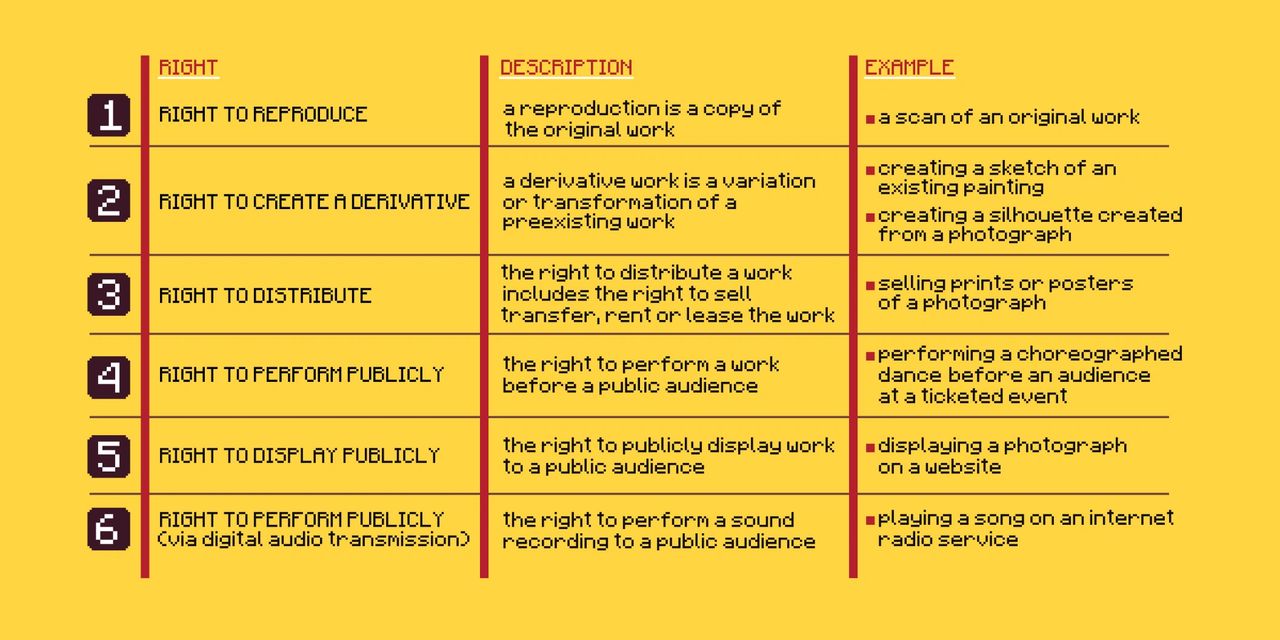A copyright protects expression, never ideas, procedures, methods, systems, processes, concepts, principles, or discoveries, and US Copyright law provides copyright owners with the following exclusive rights:
The Right To Reproduce – Reproduce the work in copies or phonorecords.
The Right To Create A Derivative – Prepare derivative works based upon the work.
The Right To Distribute – Distribute copies or phonorecords of the work to the public by sale or other transfer of ownership or by rental, lease, or lending.
The Right To Perform Publicly – Perform the work publicly if it is a literary, musical, dramatic, or choreographic work; a pantomime; or a motion picture or other audiovisual work. Perform the work publicly by means of a digital audio transmission if the work is a sound recording.
The Right To Display Publicly – Display the work publicly if it is a literary, musical, dramatic, or choreographic work; a pantomime; or a pictorial, graphic, or sculptural work. This right also applies to the individual images of a motion picture or other audiovisual work.
The Right To Perform Publicly – This regards digital audio transmissions, and provides the right to perform a sound recording to public audiences.

In addition to the six exclusive rights detailed above, copyright provides creators of original works with the power to grant anyone, through a licensing agreement, authorization to use the creators’ works and to exercise the exclusive rights provided by copyright, subject to certain statutory limitations.
The term “licensing agreement” refers to a legal, written contract between two parties wherein the property owner (the licensor) gives permission to another party (the licensee) to use the owner’s brand, patent, or trademark. Unlike the sale of an asset, the licensor continues as the ultimate owner of the asset or methodology; limited rights to use what the licensor owns are transferred, not ownership. Typically, a licensing agreement contains details on what is required of both parties, compensation, and terms of usage
Thanks for reading!
